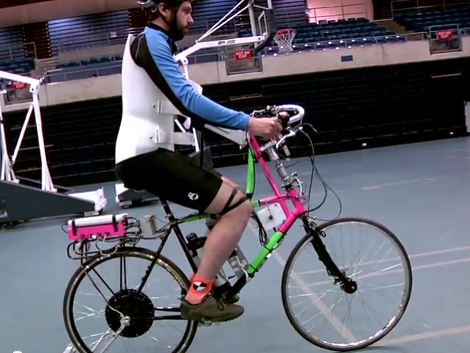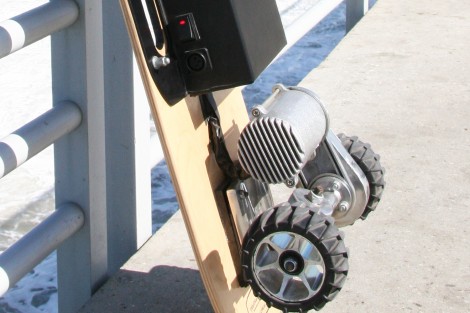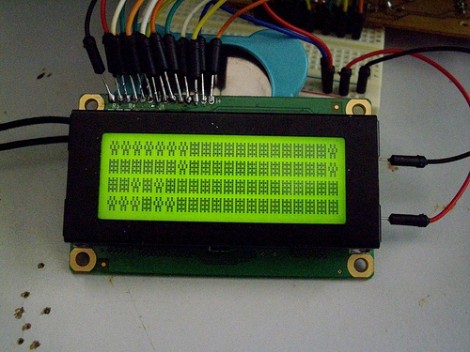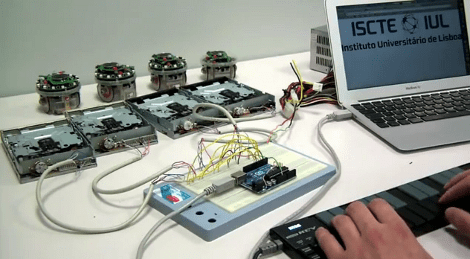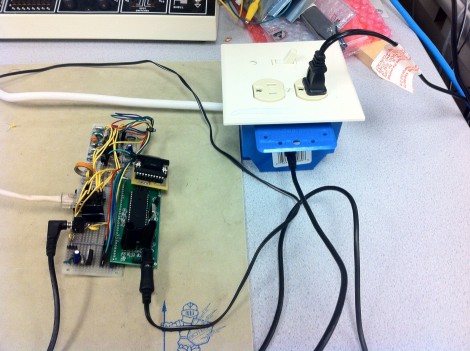
[Adam] and [Jeremy] took on the challenge of designing a system that would make it easy to control appliances from the Internet. We’ve seen the concept many times before; it involves some method of switching mains power and connecting that mechanism to the Internet. This design is both well planned and nicely executed.
We’re always very interested in the power switching for a project like this. It’s good that an approved electrical box houses all of the high-voltage parts in the project. Here a GA8-2B02 solid state relay switches power between the incoming cord and the two outlets. We didn’t get a look in the box, but hopefully there’s a partition between those wires and the low-voltage control wiring which uses a standard 3.5 mm audio jack as an interconnect.
An ATmega644 drives the control signal for the relay. It’s connected via Ethernet cable to the Internet through the use of an ENC28J60 chip which takes care of LAN communications. This is essentially a light-weight web server that will be easy to adapt to receive commands from just about any web-connected sender.
[Thanks Bruce]


